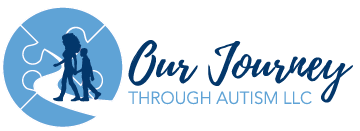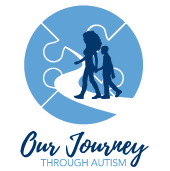
About Autism
“If you’ve met one person with autism, you’ve met one person with autism.”
Dr. Stephen Shore
What is Autism?
Autism, or autism spectrum disorder (ASD), is a complex developmental disorder that generally appears during early childhood development. Autism is defined by a broad range “spectrum” of conditions characterized by challenges with social skills, repetitive behaviors, speech and nonverbal communication. Many people with autism also have sensory issues. These can include aversions to certain sights, sounds and other sensations.
We now know that there is not one autism but many subtypes, and each person with autism can have unique strengths and challenges.
What Causes Autism?
NO ONE knowns exactly what causes Autism. However, it has been accepted amongst most that that there are many different factors that can influence the development of Autism. Primarily, these include genetic, medical conditions and environmental factors .
Is There a Cure for Autism?
There is NO cure for Autism, Individuals with autism do not “outgrow” autism. However, Autism is a treatable developmental disorders. Studies show that early diagnosis and intervention lead to significantly improved outcomes.
How is Autism Diagnosed?
The earlier the diagnosis of autism is made, the sooner actions to help the child can begin. Children with autism do not follow the typical patterns of child development. In order to be diagnosed with autism the child must have had problems in at least one of these areas: communication, socialization, or restricted behavior before the age of three.
Medical Diagnosis
A medical diagnosis is made by a medical professional based on an assessment of symptoms and diagnostic tests. There are two steps in the process Developmental Screening and Comprehensive Evaluation medical diagnosis of autism spectrum disorder, for instance, is most frequently made by a physician according to the Diagnostic and Statistical Manual (DSM-5, released 2013) of the American Psychological Association. This manual guides physicians in diagnosing autism spectrum disorder according to a specific number of symptoms.
A brief observation in a single setting cannot present a true picture of someone’s abilities and behaviors. The person’s developmental history and input from parents, caregivers and/or teachers are important components of an accurate diagnosis. ( Autism Society)
Educational Determination
An educational determination is made by a multidisciplinary evaluation team of various school professionals. The evaluation results are reviewed by a team of qualified professionals and the parents to determine whether a student qualifies for special education and related services under the Individuals with Disabilities Education Act (IDEA) (Hawkins, 2009).
What is Adult Life Like with Autism?
Prognosis
There is no one answer because everyone on the spectrum is unique. Although, services and awareness has improved over the last decade the majority of services are still geared towards children and young adults. Example: public schools’ responsibility for providing services ends when the person with autism reaches the age of 22.
Some individuals with Autism will grow up and be able to live a “normal” life after receiving therapy and supportive services throughout their lives. Some adults will be able to work successfully in mainstream jobs, live independently, ect.. However, communication and social problems often cause difficulties in many areas of life. These people will continue to need encouragement and moral support in their struggle for an independent life.
Many others with autism are able to work in special environments especially if they are supervised by managers trained in working with persons with disabilities. A nurturing environment at home, at school, and later in job training and at work, helps persons with autism continue to learn and to develop throughout their lives.
How Many People Have Autism?
There is not a worldwide uniform criteria for assessing autism, and even if there were, not every country has the resources to conduct such an assessment.
According to the CDC In the United States approximately 1 in 59 births will result in a child with Autism. This a large increase from the data in 2000 which at the time it was estimated at 1 in 150 births. Prevalence has increased by 6-15 percent each year from 2002 to 2010. Autism is the fastest growing developmental disability. Boys are 4 times more likely to have Autism than girls.(CDC, 2018)
More than 3.5 million Americans live with an autism spectrum disorder. (Buescher et al.,

